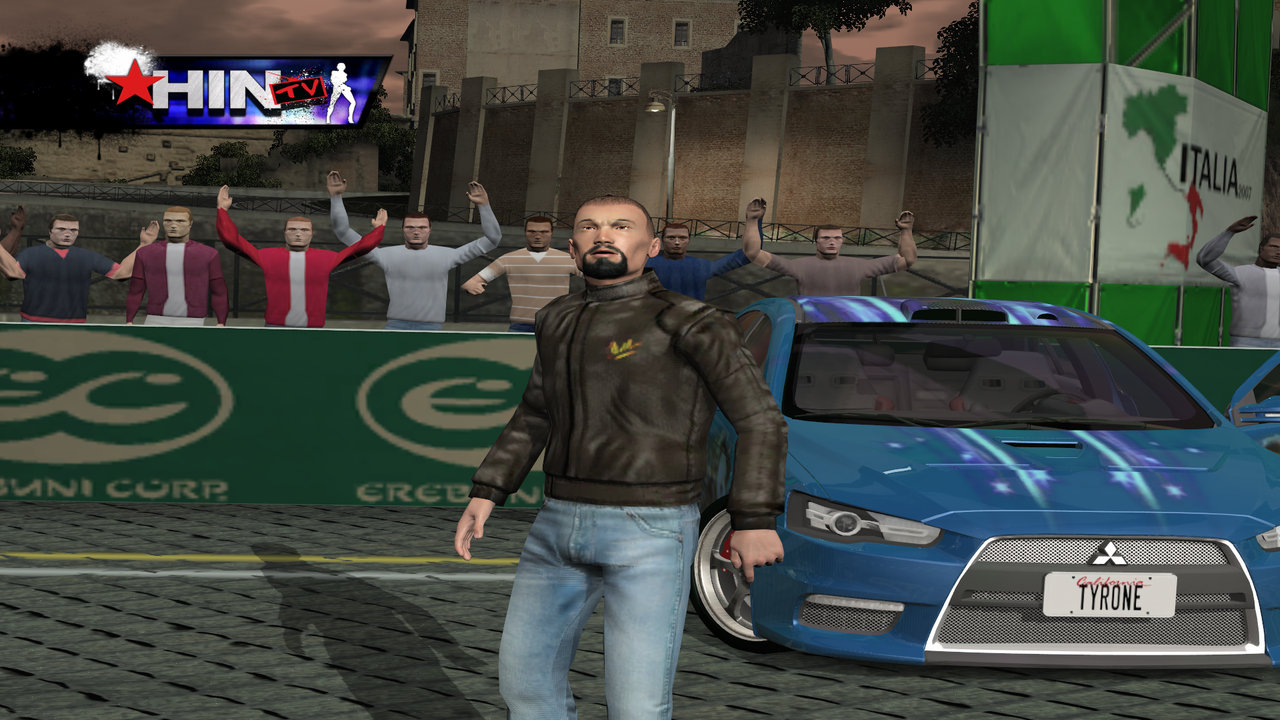
Juiced 2: Hot Import Nights
Written by: Rik
Date posted: April 11, 2016
- Genre: Racing
- Developed by: Juice Games
- Published by: THQ
- Year released: 2007
- Our score: 5
The original Juiced was generally considered a bit of a low-key nonentity, to the extent that the existence and relatively high profile of this sequel came as a bit of a surprise at the time. I actually quite liked Juiced. Despite being hamstrung by some catastrophic design choices, it was more than just another street racer, with the slightly more serious handling model making the actual driving bits pretty satisfying, and I figured if the sequel could address some of the structural issues with the career mode, we could be onto a winner.
Evidently, someone felt strongly that one of the key things missing from the first game was women in bikinis, because we certainly get a lot of that here. I suppose we’re in fairly blokey territory, but even by the standards of your standard street-racing game, it’s fairly gratuitous. There’s a polygonal pole dancer on the career menu screen for no apparent reason, and each and every race select screen is accompanied by photographs of young women giving you lustful looks while not wearing very much. [*Partridge voice* Oooh, sexy cars!]
The presentation is so odd, you could almost pass it off as parody. An advert for the original Juiced featured high-fiving douchebags customising a woman in the way you would a car (“upgrade her boobs, bro!”) so either developers Juice Games are just a bit like that, or there was pressure from elsewhere to include more of this kind of content, and they figured they might as well go so over the top to try and make a point to the publishers.
Either way, Juiced 2 very much feels like a game where they’ve gone, oh, well, if this is what you people want, this is what you’re going to get. [*Sigh* Leonard! They didn’t like our first game! What can we do? Dumb it down a bit and add some more skin?] The massed crowds in the game consist exclusively of simple-looking, lunk-headed blokes making repetitive gestures, and this would seem to be exactly who this game is aimed at. Whatever was distinctive about Juiced has been hammered out, and all that’s left is a fairly standard arcade racer.
The good news is that the career structure has been fixed, so you can actually restart races without your failure and the associated damage to your finances being ruthlessly autosaved. There are some exceptions – for example, if you’re midway through a tournament or championship event with a series of races, you can’t just quit and restart because you’re losing. And if you choose to participate in the dreaded pink slip races, the consequences will still be final (i.e. you’ll lose your car). Thankfully though, you’ll be able to mostly avoid pink slips altogether if you want, with the career mode being structured in a way that means you can largely focus on the ones you prefer. There’s no fear of constant mobile calls challenging you to races this time.
You start in the bottom of 9 leagues, and must complete a set number of events in each to unlock a promotion event which will allow you to progress to the league above. At which point you will most likely need to upgrade or replace your car. And so on, until you get to the top. Events are basically circuit or drift based races, in a variety of flavours. Besides the standard lap races, there’s Eliminator, in which the last car on each lap is eliminated, and Last Man Standing, where vehicles are eliminated if they crash into any scenery (the tactics on the latter involve heavy use of the ‘spook’ gimmick, whereby you can make these hardened street racers lose their nerve by driving behind them for a few seconds until a bar fills up and they crash). Spooking opponents can often be a goal in itself, along with betting against other drivers, so it makes sense to try and hit these goals during races.
The drift mode will be familiar to fans of the genre, and again these races come in various forms. Drift King is your traditional ‘rack up points until the timer runs out’ affair, Endurance involves chaining together a load of drifts without interruption until you pass a specified total (or don’t, amid furious bouts of swearing), while Obliterator combines drift and circuit modes by setting you a points total per lap but also demanding you pass the finish line first. The problem with Obliterator is that Juiced 2, like Black Box’s Need for Speed games before it, employs a special wobbly handling model for these races. It’s designed to make drifting easier, but it also makes getting round the track a bit of a bugger. The points total required on each lap is pretty low, so you’d want to just race for the finish when you hit it, but you pretty much have to drift round the whole course anyway, otherwise you’ll spin out and lose the lead. It’s all a bit of a step down from Juiced’s Showoff mode, in which you were trusted to prat around and pull off tricks without any adjustment to handling. Still, the overall structure is an improvement: good.
It’s a shame that the actual driving itself is lacking. The handling is very lightweight, with little sense at any point that you’re actually driving a car. Needs for Speed’s handling may not have been perfect, but there was always the sense that you were dealing with a big machine made of metal. Juiced 2 feels more like an old DOS racer like SuperKarts, in that it’s almost too responsive – press left and your car will go left, but it doesn’t feel like you’re steering a vehicle at high speed.
During the first half of the game, this really got on my nerves: although progress was fine, I wasn’t finding it very satisfying (and was also slightly distracted by the weird way the behind car camera doesn’t seem to track you round corners, although I think this was a bit of an issue in Juiced as well). Out of the corner of my eye I spotted the game box mentioning drifting a lot, and idly wondered if I was supposed to make more liberal use of the handbrake. Sure enough, you can slide around corners using this method, and doing so adds an extra sense of danger and excitement, as well as filling up your nitrous meter. Boredom can lead to over-frequent use of the handbrake, but it rarely matters, as victory in circuit races is pretty much assured despite occasionally idiotic driving on your part. During a handful of races I felt ‘in the zone’, focusing on smoother and faster laps, but in most others driving less than perfectly was rarely punished.
I hoped that things would get harder towards the top leagues, but apart from a few drift events, frustration was minimal, apart from with the general lack of involvement. I was disappointed to find that the game’s worst event – Extreme Nitrous, in which your nitrous gauge keeps refilling endlessly and you pretty much keep it held down for the duration, in a distressing abandonment of reality – was used for the final challenge.
The repetitive nature of this kind of game is again apparent, as even with a decent range of events, you still find yourself racing on the same handful of tracks over and over again. I even found myself trying out the Crew Race events, where you race as part of a team, and which I previously disliked, in an attempt to provide a bit of variety (they actually weren’t too bad in the context of a more forgiving structure and difficulty level). The best bits by far are the mini challenges that you have to pass to unlock performance upgrades for your vehicle, which are short and sharp and actually demand some skill and strategy. But they’re limited to a handful per league.
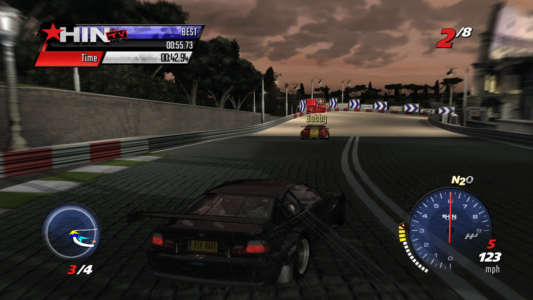
You get helpful in-game reminders of who you need to ‘spook’, or any drivers you’ve made a bet with.
Speaking of upgrades, your vehicle is Juiced 2 is little more than an avatar. There’s no real difference between the cars in terms of handling, so it’s difficult to get too excited about new ones that you unlock. There’s a wide choice, and at the very least you want to be tempted to get a pricier ride than you actually need on the basis of something other than quite liking the shape of it. But if you were to take a utilitarian approach you could probably use the same car from one of the lower leagues and keep upgrading it until the end of the game. Occasionally, events force you to have a particular kind of vehicle, but otherwise you can be fairly boring.
It’s a shame. In Juiced, you could hold onto the same car for a while, but there were noticeable differences is handling and performance that acted as an incentive to grab new ones. You can at least make them look different: as ever, there’s the option to add big spoilers and other ludicrous accoutrements, and if you have hours of spare time, and the inclination, you can add various gaudy vinyl designs to them too.
In an attempt to increase your attachment to your vehicle, you can actually view its pink slip, which includes a history of upgrades, races and loses, and it does sort of work. In a manner that suggests I might develop a severe problem were I to take up gambling, the one time I got into a bit of trouble with Juiced 2 was when I lost my starter vehicle to some moustachioed French rival and then bought three new cars (and lost them) in an frenzied attempt to win it back. Later, that car just disappeared – it would have been nice to stroll back to that guy later in the game and be like *Gravelly voice* Hey asshole, I’ve come to take back what’s mine. But I think it counts as an improvement that you do at least care a little bit.
The other racers are a bland bunch, with a one sentence biography somewhere towards the start of the game soon becoming a distant memory after you’ve raced them for the thousandth time. You can also customize your own driver – I went for a knobbish bald skater dude that I dressed in a Guy Ritchie style outfit. Frankly, he looked as if the only place he’d drive is to an overpriced pub in a Range Rover, which I found more comical than I perhaps should have done. Unfortunately my childish amusement was undermined when I realised the mildly nonsensical utterances that occurred at the end of each race were actually from my own in-game representation, and I could no longer pretend he spoke with a mockney accent. Furthermore, after hearing the same squeaky phrases over and over again, I started to pine for Flatout’s ‘driver thrown through the windscreen’ feature.
Each driver has their own racing ‘DNA’ profile, which supposedly tells you how they’ll drive, respond to bets and so on. You’ll also develop your own as you progress. I’m not sure how well it works: opposing drivers are beaten so easily, you don’t notice any distinctive characteristics, while your own DNA is less about personality, and more a log of what you’ve done: how many times you’ve overtaken other drivers, or performed a powerslide, for example. So by virtue of simply progressing through the game I developed some kind of Mr-Nerves-of-Steel-Iceman DNA, even though I frequently ballsed up corners and smashed into opponents.
Hot Import Nights is a little disappointing on the audio-visual front. Aside from the general tackiness of the endless shots of scantily-clad women doing a sexyface, the visual presentation has the general air of a late-night tattoo parlour, and fairly featureless circuits are given zany names rendered in bright clashing colours in an attempt to somehow give them character. I was going to say I quite liked the Hot Import Nights branding, until I realised that HIN is an actual real-life car event thing, and that it’s probably this tie-in that informed the inclusion of some of the more bone-headed elements of the presentation. Perhaps there are real-life HIN shows where men drive cars in front of other men and then a woman in a bikini does a DJ set at the end. I don’t know, readers – I drive a Honda Civic. It’s got a dent in.
The in-game graphics look okay, but not much of an improvement on Juiced, which was released on the previous generation of console hardware, and the general lack of glossiness is apparent when compared with Black Box’s Need for Speed games. There’s also some noticeable pop-up, which you’d hope to avoid in a relatively modern game. Music, meanwhile, seems to be just generic pap, except occasionally you hear Go With The Flow by Queens of The Stone Age and a remix of Voodoo People by Prodigy. It’s a bit weird – it’s as if the game has gone a bit mad and found a couple of lonely old MP3 files on your hard drive. You might criticise Need for Speed for harvesting a selection of moderately trendy tunes for their soundtracks but at least they go the full hog and at least have a coherent selection.
I keep mentioning NFS because a deliberate attempt has been made to move into that territory. Juiced had sim elements which sort of justified the barren streets and endless circuit races. With those removed, it’s competing directly with the other glossy and superficial arcade racers. Juiced 2 isn’t as good as Need for Speed: Carbon, which has some of the same flaws in that it’s too easy, and some of the gimmicks don’t really work, but the handling is more satisfying, there are moments of tension and excitement, and the production values are higher. It’s not even as good as Need for Speed: Underground (and yes, I did check – see The Class of 2003 for more).
And it certainly doesn’t compare favourably with the original Juiced. The structure is better but the driving is worse. I kept playing in the hope of finding hidden depths, and when I realised I wouldn’t find any, I’d come so far I thought I may as well just finish it. In the way that you keep eating a large pizza you wish you hadn’t ordered in the first place. It’s not bad. But it’s not good either.

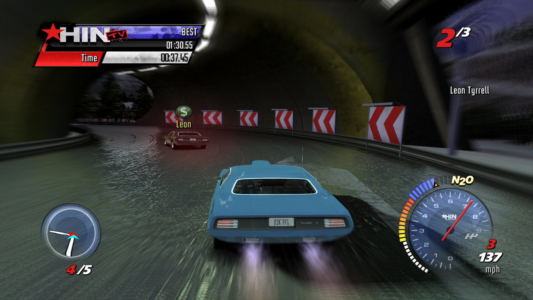
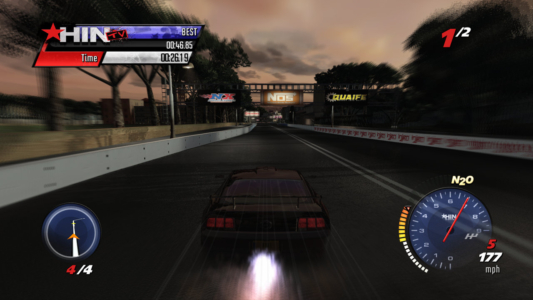
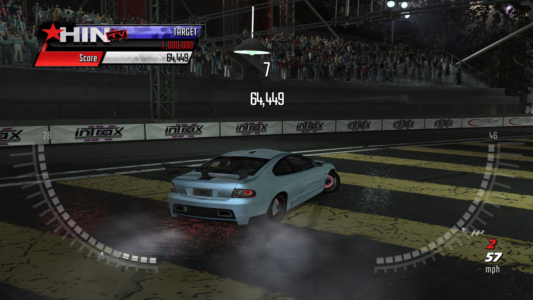
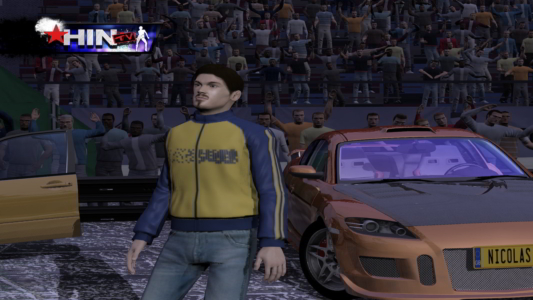
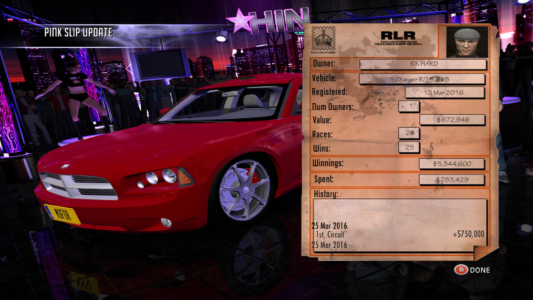

 Posts
Posts